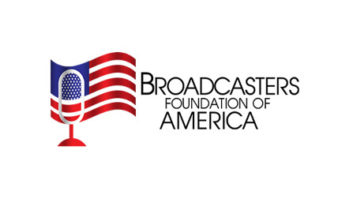Public radio stations across the country are preparing to change how they move and store their audio, although the project has taken more than a year longer than originally anticipated.
The rollout of the much-anticipated ContentDepot, a next-generation replacement for the Public Radio Satellite System, is underway, with proponents promising more reliable transmission of network programs, more control and tracking for program producers and an easy-to use interface.
At the NPR Public Radio Engineering Conference in Las Vegas in April, PRSS Director of Technology Marty Bloss and his technical staff presented an update of ContentDepot’s features and system architecture.
Key on the minds of many of the assembled engineers were questions about schedule and the practicalities of installing the new hardware.
The official word at the conference was that stations would receive packages from PRSS containing two storage receivers, two streaming decoders, an L-band splitter and system documentation by the end of June. A 90-day dual operation period, allowing full-time operation of the new system while the old one is still in place, would run through September.
However, Vice President of NPR Distribution Pete Loewenstein announced in a May 6 memo to PRSS interconnected stations and non-commercial program producers that the rollout has been further delayed. Citing “additional development, review and testing” that needs to be performed on a key piece of software, Loewenstein indicated that ContentDepot would likely launch this fall.
The software in question interfaces with various components of the ContentDepot system. At press time, PRSS was developing a revised testing plan, and planned to announce new delivery dates in mid-May.
Earlier plans had called for ContentDepot to launch last fall; then the schedule was revised to this summer.
Once stations receive their hardware, the installation should not take much time, according to PRSS. Beta test users, including Vermont Public Radio Director of Engineering Rich Parker, have reported that the new system is easy to install.
“It really couldn’t be simpler,” Parker says in a training DVD distributed to station engineers at the PREC. Copies of the DVD will be included with each station’s equipment package and the individual segments are available on the PRSS Web site at www.prss.org
Three systems
The ContentDepot actually consists of three distinct interoperating systems, Bloss said.
The ContentDepot Catalog, launched in October 2003, is a Web-accessible database that allows producers to post and manage programs’ distribution and to receive carriage and usage data. Producers have been entering program information since the site launched, allowing stations to browse the catalog to obtain descriptions, promos, marketing materials and audio files of select shows.
The ContentDepot Portal is another Web-centered database that allows multiple users from each station to log in and obtain access to the program information that is most relevant to their job functions. For example, program directors may be granted access to a station’s program schedule to ensure that the proper shows are delivered, while on-air operators may only see alerts or notifications of updated programs in the schedule. Someone at each facility who is designated to administer ContentDepot will manage permissions of portal users at the station level.
Finally, the ContentDepot distribution system manages the process of getting programs to stations as they are needed. This represents the most tangible change for station personnel, because it directly affects how programs are acquired and broadcast.
Live vs. pre-recorded
A key concept within ContentDepot is differentiation of programs into streams and files. Streams are live programs, delivered for live broadcast, such as the NPR newsmagazine “Morning Edition” or the Classical 24 music service. Files are programs with longer lead times, typically recorded by stations off the satellite for later broadcast.
The distinction is important for stations, because the two types of programs will need to be handled differently by station operations staffs. Live streams essentially are equivalent to today’s SCPC channels, and stations will need to route one of four audio outputs available on the IDC streaming decoders to air or set their automation system to record the program, if needed.
Files, on the other hand, will be captured and saved on the IDC storage receivers without much involvement by station staff. Once a program is requested via the Portal, the ContentDepot distribution system will package an IP multicast file transfer and initiate transmission based on the projected need for the program from each station’s schedule data. Each station’s receiver then will either capture or ignore the data by checking the addressing of the data packets.
Once a file is fully received and is resident as a complete file on the storage receiver’s internal hard drive, the station’s automation system will import the new file and make it available for playout or scheduling. PRSS has worked with 16 automation system vendors to ensure that file importing modules are available for the systems used by most interconnected public radio stations.
The program’s producer determines whether the show will be distributed as a stream or a file, although the individual has the option to do both. “Any live stream can be captured and redistributed as a file,” Bloss noted, which may be useful for programs that are carried live by some stations and rebroadcast later by others.
The ContentDepot fee structure will favor transmission of file-based programs; these require less coordination than streamed programs.
Forward compatibility
ContentDepot will replace the 20-year-old single-carrier-per-channel satellite network and its associated Satellite Operating Support System control software.
SCPC systems can be spectrally inefficient and inconvenient for some stations operationally, as all programs are fed as audio and must be recorded in real time. Many public radio engineers have said that the OS/2-based SOSS system has been difficult to incorporate into station networks and operational workflows because IBM is no longer developing the operating system.
In addition, the widespread use of alternative delivery methods for audio, such as ISDN and file transfers via the public Internet, has transformed the way many public radio stations operate, minimizing the need for relatively expensive satellite time for production use and missed program re-feeds.
Recognizing this, PRSS has turned to IP-based technology for the ContentDepot, coupling its existing satellite infrastructure with the DVB-S standard for satellite broadcast of digital data, to create what proponents believe will be a flexible and easily updated distribution system.
Working with Siemens Business Services, formerly BBC Technology, and equipment vendor International Datacasting Corp., PRSS has tested the use of unidirectional UDP, a common computer networking protocol, to transmit MPEG-1 Layer 2 audio over the DVB-S system.
PRSS staffers say this reliance on open standards would allow the system to keep pace with evolving technologies, avoiding the problems public radio stations experienced with the SOSS system as IBM’s support for OS/2 waned.
Focus on IP-based standards also offers the long-term advantage of distribution flexibility. While satellite distribution is currently the most cost-effective method for delivering programming, PRSS says stations using ContentDepot will be able to take advantage of future high-capacity interconnection technologies, such as point-to-point fiber or Internet 2, as those become viable.






